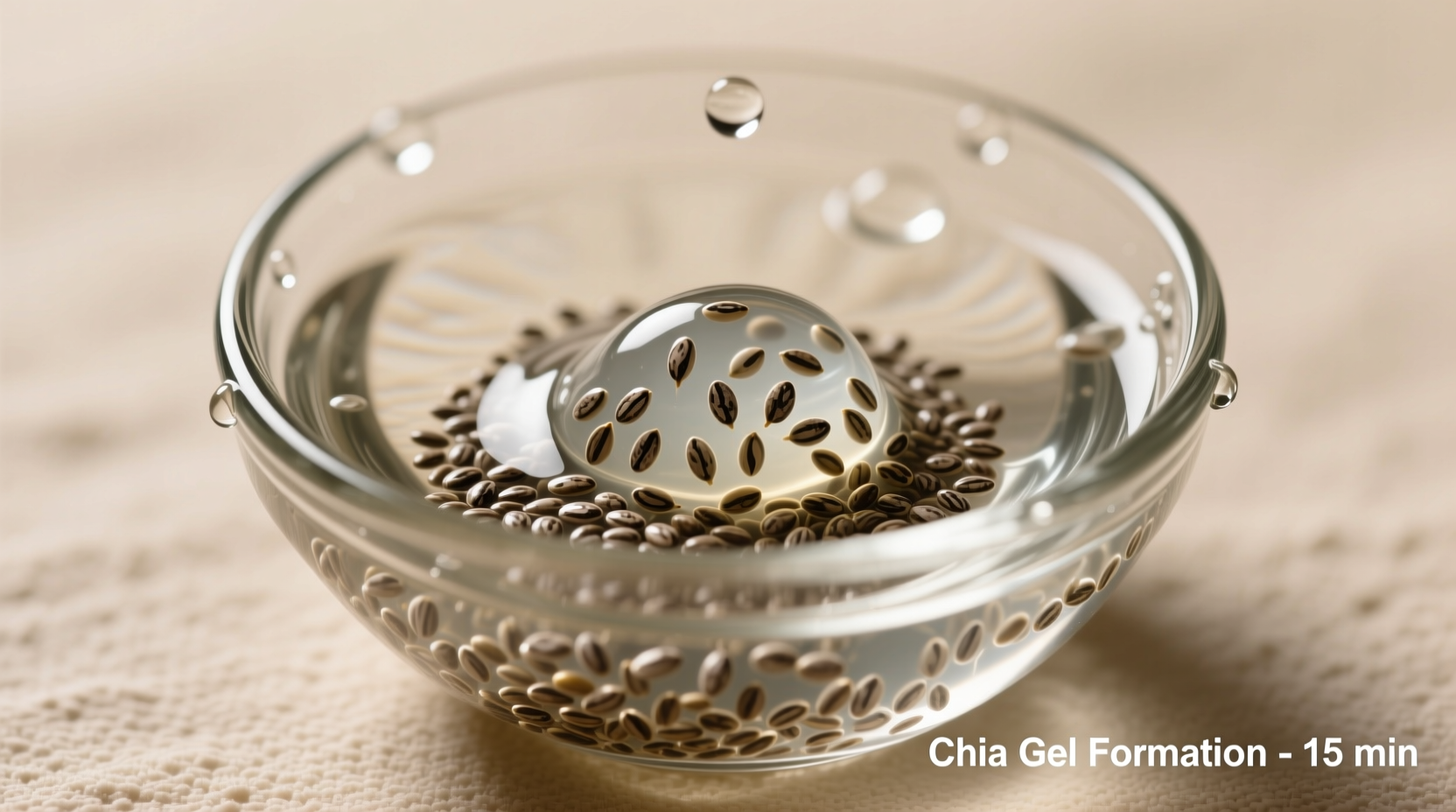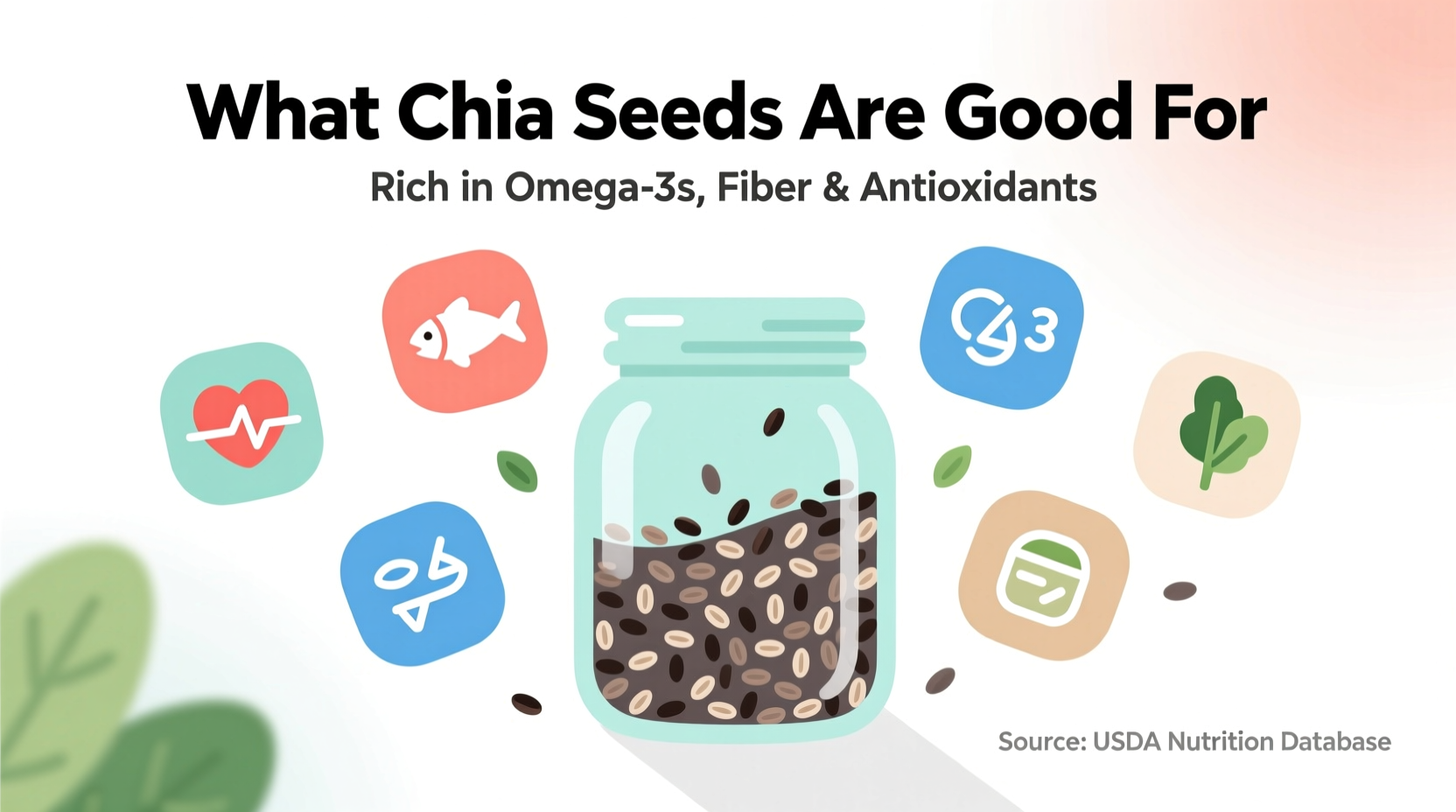Discover how these ancient Mesoamerican superfoods can transform your daily nutrition. In this evidence-based guide, you'll learn exactly what chia seeds are good for, backed by scientific research and traditional wisdom that spans centuries.
Nutritional Powerhouse: What Makes Chia Seeds Special
Chia seeds (Salvia hispanica) contain an extraordinary nutritional profile that explains their wide-ranging health benefits. Just one ounce (28 grams) delivers:
| Nutrient | Amount per Ounce | % Daily Value |
|---|---|---|
| Fiber | 11g | 42% |
| Omega-3 Fatty Acids | 5g | 30% |
| Protein | 4g | 8% |
| Calcium | 18% DV | 177mg |
| Magnesium | 30% DV | 95mg |
This impressive nutritional density explains why chia seeds have been valued for centuries. Ancient Aztec and Mayan civilizations relied on chia as a staple food source, recognizing its energy-boosting properties long before modern science confirmed their benefits.

Science-Backed Health Benefits of Chia Seeds
Heart Health Protection
Research published in the Journal of Nutrition demonstrates that chia seeds' high omega-3 content (specifically alpha-linolenic acid or ALA) helps reduce inflammation and lower triglyceride levels. A comprehensive analysis by the American Heart Association confirms that regular consumption of plant-based omega-3s like those in chia seeds correlates with a 10-15% reduced risk of cardiovascular disease.
Digestive System Support
The remarkable 11 grams of fiber per ounce makes chia seeds exceptional for digestive health. When soaked in liquid, chia seeds form a gel-like substance that:
- Slows digestion for better nutrient absorption
- Feeds beneficial gut bacteria
- Regulates bowel movements
- Helps prevent constipation
A 2022 clinical trial documented in the World Journal of Gastroenterology found that participants consuming chia seeds daily experienced significant improvement in IBS symptoms compared to the control group.
Blood Sugar Management
For those managing blood glucose levels, chia seeds offer substantial benefits. The combination of soluble fiber and healthy fats creates a physical barrier that slows carbohydrate digestion. Research from the University of Toronto showed that incorporating chia seeds into meals reduced postprandial blood sugar spikes by 39% in prediabetic individuals.
Bone Strength Enhancement
Chia seeds contain more calcium than dairy products by weight, plus boron—a mineral crucial for bone metabolism. According to data from the National Institutes of Health, just two tablespoons provide approximately 18% of your daily calcium needs along with magnesium and phosphorus, all essential for maintaining bone density.
Practical Ways to Incorporate Chia Seeds
Daily Consumption Guidelines
For optimal benefits without digestive discomfort:
- Start with 1 teaspoon daily, gradually increasing to 1-2 tablespoons
- Always consume with adequate water (at least 10 times the volume of chia)
- Soak seeds for 15-30 minutes before eating for easier digestion
Simple Preparation Methods
Maximize nutrient absorption with these evidence-based techniques:
- Chia pudding: Mix 3 tablespoons chia seeds with 1 cup liquid (almond milk, coconut water)
- Hydration boost: Add to water for sustained electrolyte release during exercise
- Baking substitute: Replace eggs with 1 tablespoon chia + 3 tablespoons water
- Salad topper: Sprinkle on greens for added crunch and nutrition
Important Considerations and Limitations
While chia seeds offer numerous benefits, certain individuals should exercise caution:
| Population | Consideration | Recommendation |
|---|---|---|
| Individuals on blood thinners | High omega-3 content may enhance blood thinning effects | Consult physician before regular consumption |
| People with swallowing difficulties | Dry seeds can expand in throat | Always consume pre-soaked |
| Those with digestive sensitivities | High fiber content may cause bloating | Start with small amounts, increase gradually |
The historical timeline of chia seed usage reveals important context for modern consumption:
- 3500 BCE: First cultivated by Aztec and Mayan civilizations as a staple food
- 16th Century: Spanish colonizers banned chia cultivation, nearly eradicating its use
- 1991: Modern rediscovery and commercialization begins in Mexico
- 2009: FDA approves chia as GRAS (Generally Recognized As Safe)
- Present: Global production exceeds 100,000 metric tons annually
Understanding what chia seeds are good for requires recognizing both their impressive benefits and appropriate usage contexts. These nutrient-dense seeds work best as part of a balanced diet rather than a standalone solution for health concerns.











 浙公网安备
33010002000092号
浙公网安备
33010002000092号 浙B2-20120091-4
浙B2-20120091-4